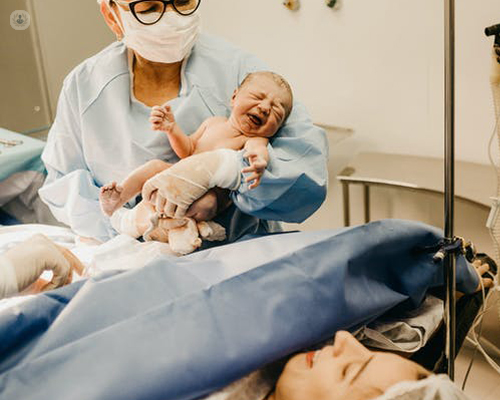Scarring after childbirth
How does scarring after childbirth occur?
Scarring of the perineum after childbirth can occur in a variety of ways. The main, most common causes are:
- If a deep wound in the perineum has been left unstitched
- If the wound is deep and the wound is allowed to heal on its own, it will do so by forming significant scar tissue
- If the wound has not been approximated correctly or if there is a tendency for excessive scarring, a bridge of scar tissue can form across the lower end of the opening of the vagina

What happens if scarring after childbirth is left untreated?
If left untreated, women can experience prolonged suffering in their daily lives. Scarring of the perineum can cause:
- Deep, irregular and unsightly scarring of the perineum
- Persistent exuberant scar tissue (granulation tissue) can cause pain and bleeding
- Scar tissue narrowing the opening of the vagina, making insertion of tampons and sexual intercourse particularly painful
What treatment is available for scarring after childbirth?
Granulation tissue can be cauterised with a chemical called silver nitrate to encourage healing. Depressed scars can also be refashioned to bring the edges of the original wound together to minimise the scar tissue on the perineum. Although this is intended to reduce scar tissue, the procedure itself may carry a risk of infection leading to further scarring.
Another possible treatment can occur if the opening of the vagina is narrowed with scar tissue. If this occurs, it can be refashioned by a procedure called Fenton’s operation. This can be easily performed in an outpatient setting under local anaesthesia. Injections and steroids are also readily available treatments for scarring after childbirth.
Is scarring after childbirth a long-term condition?
Once a scar is formed in the perineum, it will remain for life. The scar does however undergo remodelling in the first six months to one year, and may shrink as a result within this specific time frame.
How can people with scarring after childbirth manage their recovery?
The majority of maternity units throughout the UK now offer the Obstetric Anal Sphincter Injury Care bundle. This is a series of steps to reduce the risk of significant perineum tears. Perineal support is one of the most important of these steps where in the midwife or doctor delivering you supports the perineum with their hand at the time of delivery of the head.
If the wound occurs, good approximation of the wound at the time of suturing and ensuring that large blood vessels in the wound are stitched separately will help reduce infection and scarring.
Care of the wound in the postnatal period (as outlined above) will help fight off a possible infection, and so too will an early recognition of the infection and treatment through the use of antibiotics. Refashioning of the wound after treatment of the infection, especially when it comes to deep wounds, will also play a huge role in terms of helping to reduce the scarring.